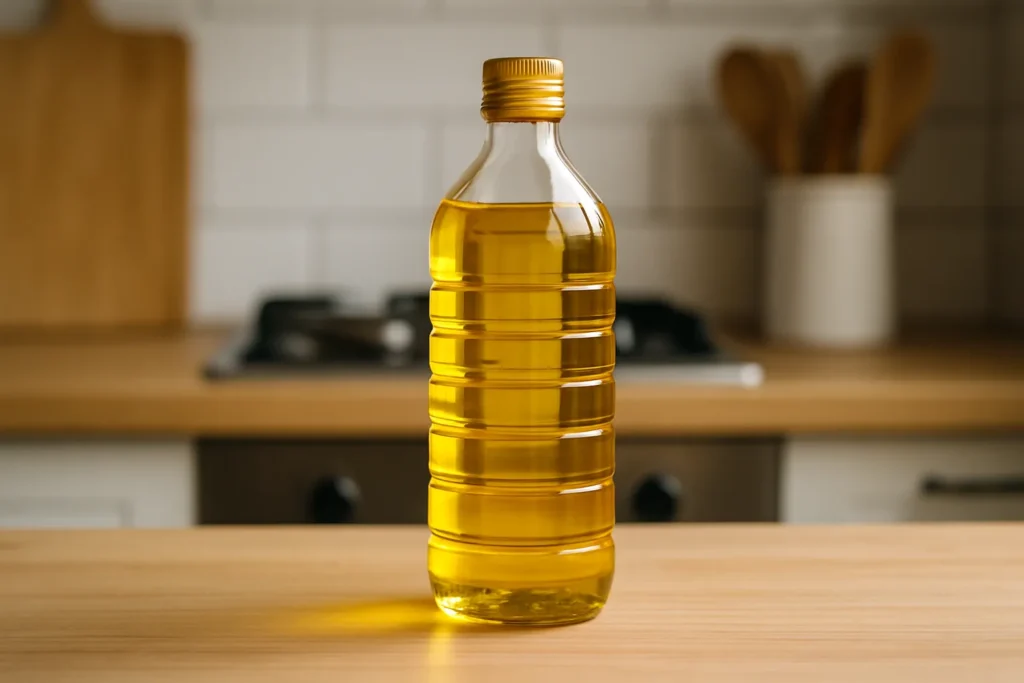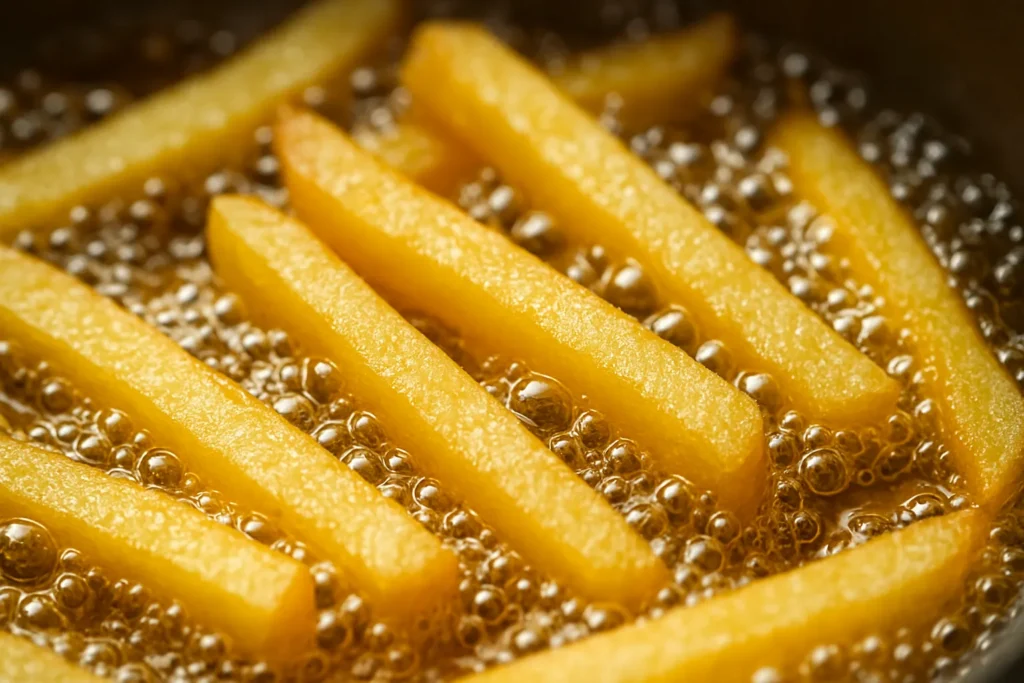How to Use Filtration and Rotation to Save Frying Oil

The financial impact of frying oil management is one of the most significant operational costs for food service establishments. With quality frying oil prices continuing to rise and sustainability concerns becoming increasingly important, maximising oil lifespan has become a critical operational focus.
Companies like Frylow in the UK have developed innovative solutions to help food service operators effectively manage their oil consumption. Still, proper filtration and rotation techniques remain fundamental to effective oil management regardless of technological approaches. The careful implementation of these practices can significantly extend oil life, helping reduce procurement costs and environmental impact.
In this post, we’ll examine the science behind oil degradation. We’ll also provide practical, evidence-based strategies for implementing effective filtration and rotation programmes that balance quality maintenance with operational efficiency.
Understanding Oil Degradation
Before implementing any oil management programme, you should understand the key factors that contribute to oil breakdown.
Frying oil deteriorates through several interconnected processes that affect both safety and food quality. Primary degradation factors include:
- Hydrolysis: Water from food products causes oil to break down into free fatty acids and glycerol
- Oxidation: Exposure to oxygen creates peroxides and eventually aldehydes and ketones
- Polymerisation: High heat causes oil molecules to join together, increasing viscosity and darkening colour
These processes accelerate when frying at excessive temperatures, using improper cool-down techniques, or allowing food particles to remain in the oil.
Implementing Effective Filtration Protocols
The UK has a vast and thriving food service industry, comprising over 43,000 full-service restaurants and more than 88,000 food outlets, including cafes, bars, and pubs that serve food. With such a large number of establishments, food waste is a significant issue, affecting both businesses and the environment.
One of the most overlooked contributors to restaurant waste is cooking oil. Improperly discarded oil clogs drains, pollutes waterways, and increases waste management costs.
Implementing an efficient filtration protocol is the cornerstone of any oil conservation programme. You should establish consistent filtration schedules based on product volume and type rather than arbitrary timeframes.
A comprehensive filtration system typically involves several components:
- Skimming surface debris throughout service periods.
- Scheduled complete filtration using appropriate filter media.
- Deep cleaning of fryer walls and heating elements during the filtration process.
- Documentation of filtration activities for quality assurance.
For high-volume operations, filtering after every 4-6 hours of continuous operation typically provides optimal results. Medium-volume establishments may achieve suitable quality maintenance with daily filtration, while low-volume operations might implement filtration every other day.
Filtration Media Selection
Selecting appropriate filtration media directly impacts both oil quality and operational efficiency. Evaluate options based on your specific operational needs and oil degradation patterns.
Standard filtration options include:
- Paper filter cones or sheets: Economical but variable filtration quality
- Stainless steel mesh screens: Reusable but limited fine particle capture
- Powder-enhanced filtration systems: Combines filter paper with active powders
- Activated carbon systems: Superior removal of dissolved impurities
If you’re seeking to maximise oil life, powder-enhanced systems using diatomaceous earth or activated carbon additives typically provide superior results. These systems capture both particulate matter and dissolved contaminants that accelerate the degradation of oil.

Oil Rotation Strategies
Strategic oil rotation complements filtration by distributing degradation evenly across different fryers. You should implement a systematic rotation programme based on product type and frying intensity.
Effective rotation typically follows this pattern:
- Fresh oil begins in fryers dedicated to delicate items (vegetables, fish)
- As oil ages, rotate to fryers used for more robust items (chips, breaded products)
- Oldest oil serves in fryers dedicated to heavily seasoned or strongly flavoured items
Using this approach ensures that food quality remains consistent while maximising oil utility. Additionally, partial refreshment—replacing 15-25% of oil volume with fresh oil after filtration—helps maintain quality without complete replacement.
Monitoring Oil Quality
Objective assessment methods provide critical data for oil management decisions. You should implement consistent testing protocols rather than relying solely on subjective evaluations.
Modern quality monitoring methods include:
- Total Polar Compounds (TPC) testing: Digital meters provide immediate readings of accumulated degradation compounds
- Polymeric Triglycerides (PTG) analysis: Specialized testing that measures polymerised triglycerides, which indicate advanced thermal degradation
- Free Fatty Acid test strips: Quick assessment of hydrolysis levels
- Colour comparison kits: Visual comparison against standardised samples
In most European countries, frying oil is considered unsuitable for use when the combined levels of Total Polar Compounds (TPC) and Polymerised Triglycerides (PTG) exceed 24%–27%. These indicators signal oil degradation, affecting food quality and safety. Adhering to these standards helps maintain optimal frying conditions while ensuring consumer health.
Technology Integration
Technology can significantly enhance traditional filtration and rotation practices.
- Automated filtration systems help minimise labour requirements, while temperature-controlled filtration optimises particle capture for better oil longevity.
- Data logging capabilities provide reliable quality assurance documentation, ensuring consistent performance.
- Oil quality sensors enable continuous monitoring, allowing businesses to make informed decisions about oil usage.
Although the initial investment in these technologies can be significant, the long-term benefits include reduced oil consumption, lower labour costs, and improved product consistency.
Conclusion
Implementing comprehensive filtration and rotation protocols is one of the most effective strategies for controlling operational costs while maintaining food quality.
Taking the time to understand the science of oil degradation and applying systematic management strategies can help food service establishments significantly extend the life of their oil while ensuring consistent product quality. When implemented correctly, these practices deliver immediate financial benefits and support sustainability initiatives by reducing waste generation.
Frequently Asked Questions
1. What is the optimal temperature for filtering fryer oil?
The optimal range is 82-93°c (180-200°f)—fluid enough for efficient filtration yet safe to handle. Higher temperatures accelerate oxidation, while lower temperatures reduce filtration effectiveness.
2. Can water-washing techniques extend oil life?
When done correctly, water-washing removes impurities that degrade oil. However, improper execution can cause boil-overs or hydrolysis damage, making it suitable only for trained personnel using specialised equipment.
3. How does food type affect filtration needs?
Protein-rich foods require frequent filtration due to amino acid release, starchy foods cause carbonisation, and moisture-heavy items accelerate hydrolysis. Custom filtration schedules based on menu type improve effectiveness.
4. What are the environmental benefits of better oil management?
Efficient filtration and oil rotation reduce waste and lower the carbon footprint associated with oil production and transportation.
